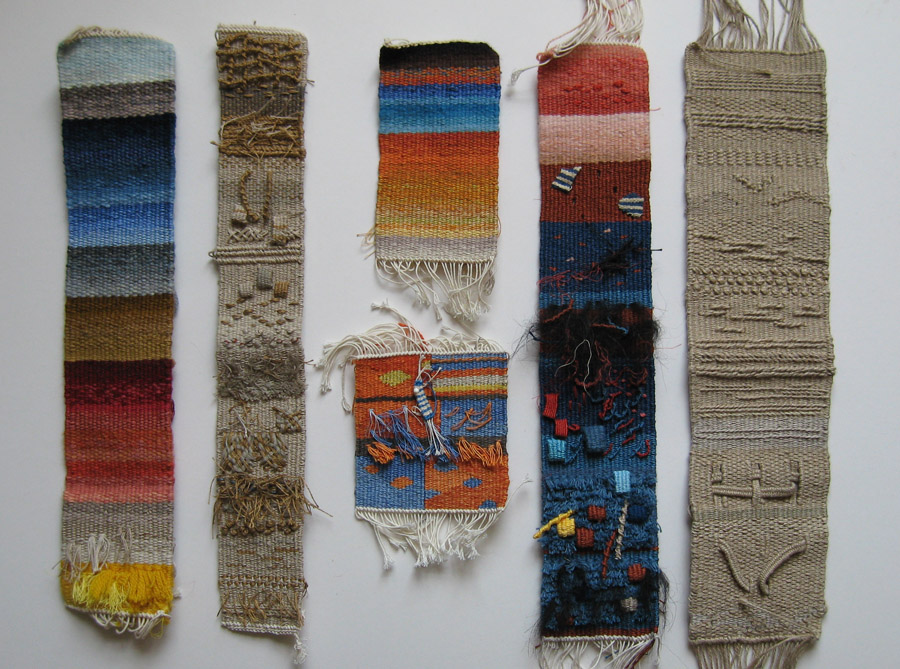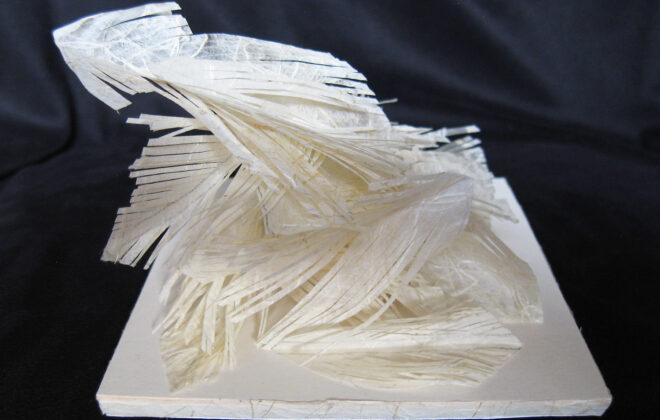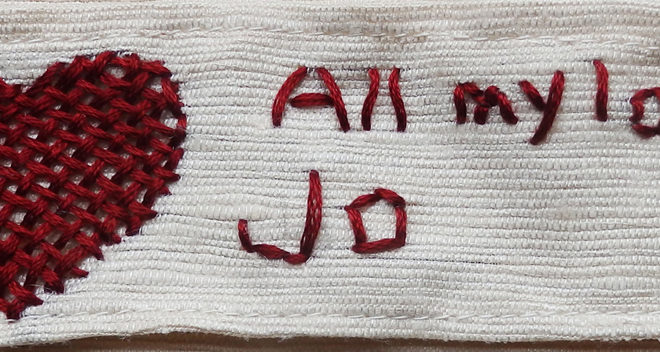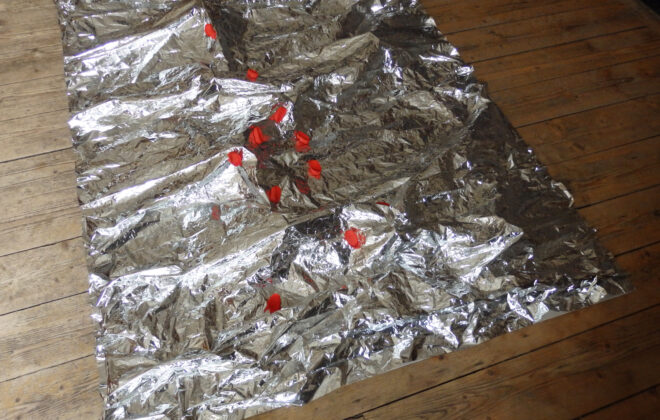Why bother weaving? What is the point?

When you embark on the weaving of a large tapestry, you know it is going to take months to complete, so you want to be sure it is worth the time and effort. Here are some of the things I try to consider.
Is it going to be better than the drawing? Otherwise, why weave it? The drawing could remain the finished work of art.
But the drawing/design itself should be ‘interrogated’, to see if it is sufficiently good to merit a tapestry made of it. For example, is it balanced? To check the composition, you can turn it upside down, to see if it still looks right. Another thing to do is to look at it through the wrong end of binoculars. The Golden Section, or two-thirds/one-third rule, helps with dividing up the picture plane well. And I am assuming that you have done lots of variations, sketches, etc before coming to the final version.
With a textile work of art, I always think there should be ‘three things’. By this I mean three main colours, three textures, three scales, etc, but not evenly divided, more in Golden Section proportions, with one of the themes dominant. Less is usually more, ie not trying to cram too many ideas into one work of art.
Then more generally, is there a point or meaning? Are you saying something worthwhile, something exciting, interesting or important? Is it original and creative? Does it look like every other tapestry I have ever woven, or worse, does it look like someone else’s tapestry?
Once you have started on the samples/test weaves, you can start to think about textures and materials that will contrast and complement each other and about the scale of the piece. Deciding on number of warps per inch will also be important.
Often at this stage I check with my friend and mentor, Maureen Hodge, who has a good eye and generously helps with tips about how to proceed. Perhaps you have someone who can look at your work and give useful advice. A fresh eye is great when you have been staring at something for weeks.
By now, you may well have spent almost as much time considering, drawing and doing samples as you will weaving the tapestry. Good. That shows that you are committed to the piece and that you have thought about the myriad ways it could go right or wrong. There are still numerous decisions to be made as you weave, but you have at least lessened the chances of a bad outcome and heightened the possibility of making a successful and exciting tapestry.




